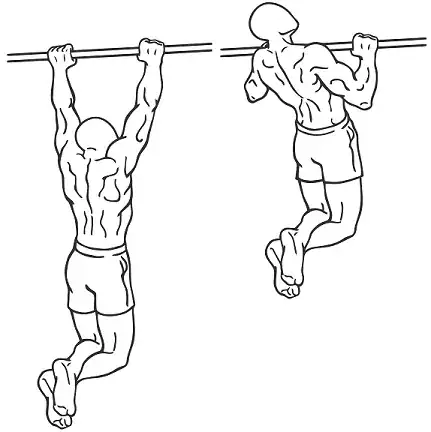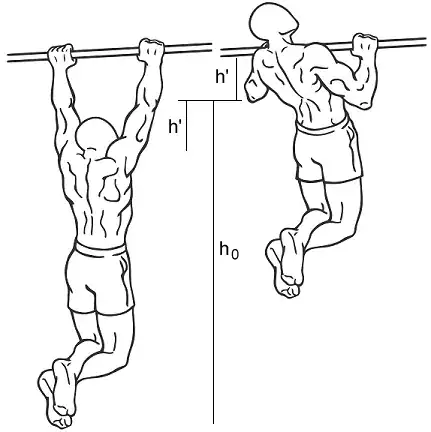Yes, you do put more weight on the bar.
Your mass here is $m$.
To hang, you simply put force $F=mg$ on the bar (and equivalently, the bar puts that same force on you, so the forces cancel and you don't move anywhere).
For you to move upwards at some acceleration $a$, now you need the net force on you to equal $ma$: $\sum F = ma = F_{bar}-mg$. So, $F_{bar} = m(g+a)$.
This is the force the bar must put on you to accelerate up, so it's the force you put on the bar.
Note that in the case of hanging ($a=0$), it reduces to the first case, $F_{bar} = mg$.
Edit: I'll add a tiny caveat because it can possibly be confusing. You'll notice that in this scenario, there's only more force on the bar if you're accelerating up. If you manage to go up at a totally constant speed, the force should be $mg$ still. I guess the reason this doesn't happen is because it's nearly impossible for a human to do.

